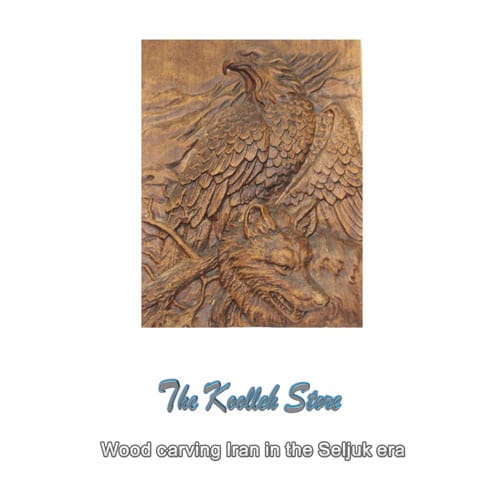Wood carving Iran in the Seljuk era

The Seljuk period in Iran is a period of renaissance of all Iranian arts, whether Eastern or Western. Of course, the Seljuks were not the initiators of this cultural and artistic revolution and this revival, but it was during their time that Iran’s genius reached its peak and continued after that. The Seljuk dynasty, a Turkic-born national resurrection, dates back to the Samanid era. “The art of woodcarving in the Seljuk period in Iran and Asia Minor was influenced by the styles of the Levant and Egypt. From this period, we have received limited works. “Andalusian miners were influenced by the same style.”
An example of this period is the inlaid window with inscriptions in Kufic script, which is kept in the Museum of the Islamic Era, and its construction dates back to 520 AH. Surah Al-Ikhlas and the prayer for the pilgrimage of the martyrs have been engraved on it, and abstract motifs can be seen on the altar margin in the form of inscriptions, which were very common in the beds of that time. The composition of the designs of this door is very similar to the wooden tablets of the fourth century AH, which were made by the order of Taj al-Milla Abi Shoja. This window is carved and made on sycamore wood with a thickness of about 3 cm; The executed Kufic lines are not paved and its abstract (Islamic) motifs are very little formed.
There are not many examples of woodcarving and inlaid work in the Seljuk period, however, some of these works can be found in famous mosques and remote holy places, as well as some museums. Among these are large pieces with inscriptions in Kufic script and plant motifs on which pavements have been made, and the other part is part of the frame of a pulpit with hexagonal parts and palm leaf designs, with an inscription dated 546. The Hijri lunar calendar (530 AD) is written in Kufic script, named after Amir Ala al-Dawlah Garshasb, who served the Seljuks and ruled Yazd.
Another valuable work of the Seljuk period is the pulpit of Aladdin Mosque in Konya, which was built in 550 AH, equal to 534 solar (1155 AD). Woodworking and woodcarving of this period in Central Asia is very unique in its kind and, according to Dimand, is comparable to the best works of Egypt and Syria. The designs on the works of this period mostly include Islamic and Khatai (plant) designs with circular leaves and geometric patterns and Kufic lines in the form of carvings and lattice. In this mosque, there are two doors, each of which consists of 8 pieces horizontally and vertically.
They are beautifully engraved with Islamic motifs, and the inscriptions written in the third line have pavements that have made significant progress compared to previous works. Abolfazl Beyhaqi traveled to Sabzevar in 551 AH (535 AD). During this trip, he visited the Sabzevar Grand Mosque and mentioned and wrote about the wooden pulpit of the mosque, which was named after Amir Ahmad Ibn Abdullah Sajestani and some carvings were made on it:
“The Adineh Mosque in the town of Sabzevar was destroyed during the reign of Hamza ibn Azarak al-Khariji. On it was written the date of the age of “Seth and Satin and Matin”. Until then, the pulpit had been blackened with ebony wood, the arms had been blackened with nutmeg, and then Amid Abdul Rahman ibn Ismail ibn Husayn al-Dhanan took over the pulpit, and this pulpit, which was erected today, was built in the city of Khums and Khumsaya.
Other works of the Seljuk era include the doors of the Sophas Mosque in Armanak at Karate School, the doors of the Sahib Ata Mosque in Konya, and the canopy of the Ashraf Aghlo Mosque, all decorated with Islamic motifs and inscriptions in Arabic script. Beautiful pavements have been made.






